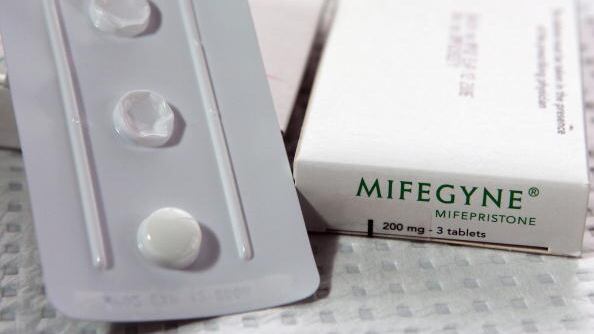Two rulings issued less than an hour apart Friday have left doctors and patients wondering if they will be able to get one of the two drugs used in medication abortions — the method used in the majority of abortions performed in the United States.
The rulings, one of which invalidated the U.S. Food and Drug Administration’s approval of the abortion pill mifepristone (pronounced: mif a pris tone), and the other that ordered the FDA to do nothing to restrict access to the pill, could push a final decision on the drug that has been on the market for 23 years to the U.S. Supreme Court.
Here’s what we know about the rulings:
What is mifepristone and how is it used for a medical abortion?
Mifepristone is one of two drugs taken when a woman is having a medication abortion. It is the first drug taken and it blocks a hormone that allows a pregnancy to develop.
According to the FDA, it can be safely used up to the first 70 days (10 weeks) of pregnancy.
Misoprostol (pronounced: my so pros tall) is the second drug taken in the regime. It is taken 24–48 hours after mifepristone, and it is designed to empty the uterus by causing cramping and bleeding, similar to an early miscarriage.
What did the two rulings say?
The ruling by Judge Matthew Kacsmaryk of the U.S. District Court for the Northern District of Texas, a preliminary injunction, says that the FDA’s approval of mifepristone in 2000 is invalid.
The lawsuit — Alliance for Hippocratic Medicine v. FDA — says the FDA did not adequately review the scientific evidence or follow proper protocols when it approved mifepristone in 2000.
In addition, Kacsmaryk blocked any subsequent FDA decisions that expanded the use of mifepristone in terminating pregnancies in the first weeks.
The second ruling, also a preliminary injunction, by Judge Thomas Rice of the U.S. District Court for the Eastern District of Washington blocks the FDA from restricting the availability of mifepristone in the states that filed the lawsuit before that court.
The state attorneys general in Washington et al. v. FDA asked Rice to remove certain restrictions — known as REMS or Risk Evaluation and Mitigation Strategy — that the FDA imposed on mifepristone. Those restrictions had been on mifepristone since the drug was approved for use.
Those states are Washington, Oregon, Colorado, Connecticut, Illinois, Nevada, Arizona, Rhode Island, Delaware, Minnesota, New Mexico, Vermont, Hawaii, Maryland, Maine, Michigan and Pennsylvania. The District of Columbia is also included.
Can a woman still get mifepristone?
For now, mifepristone is still available.
The ruling in Texas has been postponed for seven days. According to Kacsmaryk, the stay will allow the Department of Justice a chance to appeal the ruling to the U.S. Court of Appeals for the Fifth Circuit. The Justice Department represents the FDA.
The appeals court will either uphold Kacsmaryk’s ruling or put it on pause until the full case is heard. If the appeals court does neither, the Justice Department will most likely appeal that decision to the U.S. Supreme Court.
Attorney General Merrick Garland said the government would request a stay to block this ruling while the appeal is considered. That would allow the drug to continue to be used.







.jpg)